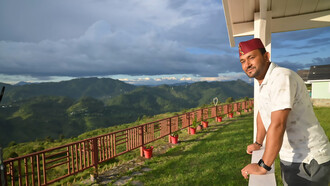I think of rivers, of tides. Forests and water gushing out. Rain and lightning. Rocks and shadows. All of these are in me.
(Haruki Murakami, Kafka on the Shore)
For those who firmly believe that Tokyo is nothing but a wild concrete jungle of narrow and congested alleys electrifying with incessant flurry of neon signs, noise, chaos and racing commuter ants, well… it’s about time to “escape” to the verdant pockets of the city where tall, thick trees, colorful shrubs of flora and running rivers surround you.
What other hidden ravine can envelope you with that perfect breeze of solace and rejuvenation than the Todoroki Valley. Tucked in the residential quarter of Setagaya, Tokyo, and located approximately twenty minutes by train from downtown Shibuya, Todoroki Valley or Todoroki Keikoku, as known to Japanese, is a forested gorge quite unknown to many tourists. Yet, its enormous scale covering groves of abundant trees, wild plants and a pleasant river located not far from Tokyo’s city center makes this luscious wilderness almost an unbelievable dreamland inside the bustling metropolis.
Upon reaching the entrance sign of the Todoroki Valley, you can instantly inhale the cool scent of the green hillscape. As you descend down the steps, the striking red Golf-bashi Bridge appears as the ultimate landmark of this valley. This bridge, which crosses the Yazawa River, was given its name from the huge golf course developed in this area during the early Showa period. The steel arch bridge in majestic red provides a marvelous contrast against the surrounding greens. The soothing sounds of the ripples of water pull you away from the toxic city life as you stroll leisurely along the scenic Yazawa river while your eyes rove around the towering trees and wild plants.
The clear water beautifully reflects the canopy of foliage within the only valley trail in Tokyo that stretches up to 1.2 kilometers. The pathway has wood planks to walk on, and there are benches along the way for a pause to drink, eat or simply absorb the pristine nature. The deeper you enter into the gorge, the more colorful the wilderness becomes. You will be wonderfully swarmed by bamboo-leaf oaks, Japanese zelkova, laurels, ferns and a diverse array of wetland plants. On the other side of the river, you may stumble into a small gate that opens to a picturesque Japanese garden. The rocks and orchards encircling a Shoin-style drawing room building to the right fit perfectly in a landscape painting. Even in springtime, the leaves cast bright reds and yellows, shining luminously against the blue sky.
Todoroki Valley may not just be an oasis of greens, but also a niche for peaceful contemplation among several religious statues you will spot along the trail. One of the conspicuous ones is a covered shrine, the Chigo Daishi-do, depicting a statue of the Kobo Daishi priest, who was said to have had a vision of discovering the spring waters in this valley.
Adding to the quiet corners of personal reflection, and perhaps, the final highlight of the Todoroki Valley journey, is the Fudoson Temple that can be reached at the top of the hill. As you climb up the stone staircase, you will be greeted by a breathtaking view of the wild ravine lit with orange lanterns that signify your arrival at the temple. The temple, which dates back to the Heian period (about 1100), is dedicated to the Wisdom King Fudo who was said to have been a guardian against evil. The main entrance to the temple is located on the right side further away from the stone staircase, but from both entrances, the scenery quickly changes to blooming flowers of numerous varieties and orange lanterns hanging in the inner garden. During spring, the temple becomes a popular site for admiring the cherry blossoms.
Finally, leaving the sanctuary will indulge you with a much refreshed and revitalized spirit. Todoroki Valley, being designated as a Tama River Scenic District in 1933, will definitely serve as your safe refuge for wholly embracing the simplest wonders of nature.















